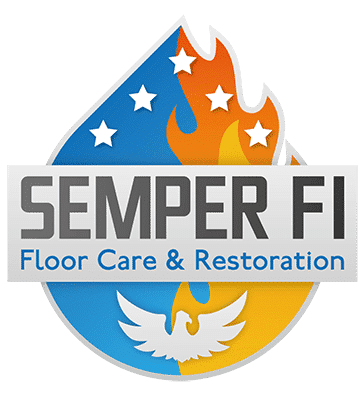Water damage is one of the most common and destructive issues homeowners face. When walls and ceilings are affected, the damage can quickly escalate, impacting not only the structural integrity of your home but also your health and comfort. Walls and ceilings are often vulnerable because water can seep in unnoticed, causing hidden damage that worsens over time.
If you’re dealing with water-damaged walls and ceilings, it’s critical to act swiftly and correctly. At Semper Fi, we specialize in comprehensive water damage restoration that includes inspection, drying, cleaning, and repair to fully restore your home. This guide will help you understand how to identify water damage, why quick action matters, and the steps to properly handle water-damaged walls and ceilings.
Understanding Water Damage in Walls and Ceilings
Water can invade walls and ceilings through a variety of sources, including leaking pipes, roof damage, appliance malfunctions, or flooding. Because these areas are enclosed, water can get trapped behind drywall, inside insulation, or above ceiling tiles, creating a hidden environment conducive to mold growth and structural weakening.
One key challenge is that water damage may not be immediately visible. Stains, bubbling paint, sagging ceilings, or warped drywall might take hours, days, or even weeks to appear. During this time, moisture can silently soak into the framework and insulation, leading to more extensive and costly repairs.
Signs of Water Damage in Walls and Ceilings
It’s essential to recognize the early warning signs of water damage to minimize its effects. Common indicators include:
- Discoloration or yellowish stains on walls or ceilings
- Peeling, bubbling, or blistering paint or wallpaper
- A damp or musty odor in affected areas
- Warped, sagging, or softened drywall or plaster
- Visible water spots or stains on ceilings
- Sagging or bulging ceiling areas
- Dripping water during active leaks
If you notice any of these signs, especially following a water incident, it’s critical to inspect the area thoroughly and act quickly to prevent mold growth and structural damage.
The Risks of Ignoring Water Damage
Ignoring water damage can lead to severe consequences. Moisture weakens the materials that make up walls and ceilings, compromising their strength and increasing the risk of collapse or further deterioration. Additionally, persistent moisture encourages mold growth, which not only damages your home but also poses health risks such as allergies, respiratory issues, and infections.
Beyond health and safety concerns, untreated water damage often results in escalating repair costs. Small issues can balloon into major restoration projects requiring demolition and reconstruction if left too long.
Steps to Handle Water-Damaged Walls and Ceilings
Stop the Source of Water
The first and most crucial step is to identify and stop the source of the water intrusion. Whether it’s a burst pipe, roof leak, or appliance malfunction, halting the water flow prevents further damage.
Assess the Extent of Damage
Once the water is stopped, inspect the affected walls and ceilings carefully. Look for visible damage as well as soft spots or dampness that may indicate moisture inside the materials. Using moisture meters and thermal imaging can help detect hidden moisture in walls and ceilings.
Dry the Area Thoroughly
Drying is a critical step that should not be rushed. Simply wiping away water is insufficient since moisture can remain trapped in drywall, insulation, and framing. Professional-grade air movers and dehumidifiers are typically needed to remove moisture completely and prevent mold growth.
Remove Severely Damaged Materials
If drywall or ceiling materials are soaked or have been wet for more than 48 hours, they usually need to be removed and replaced. Insulation that has absorbed water should also be discarded because it loses its effectiveness and becomes a breeding ground for mold.
Clean and Disinfect
After removal and drying, all remaining surfaces should be cleaned with antimicrobial agents to kill any lingering mold spores or bacteria. This step helps ensure that mold does not return after repairs.
Repair and Restore
Finally, walls and ceilings can be repaired. This may involve installing new drywall, plastering, sanding, painting, and restoring any texture or finishes to match the surrounding areas. Professionals can also check the structural integrity of framing and make any necessary reinforcements.
Preventing Future Water Damage
Prevention is always better than repair. Regularly inspecting your home’s plumbing, roof, and appliances can help catch leaks early before they cause significant damage. Proper ventilation in areas like bathrooms and kitchens reduces moisture buildup, while maintaining gutters and downspouts helps prevent roof leaks and water intrusion.
Installing moisture sensors in vulnerable areas can alert you to leaks before they escalate. Additionally, addressing any signs of water intrusion immediately keeps your walls and ceilings safe from long-term damage.
When to Call Professionals
While minor water stains might be manageable on your own, water damage often requires professional expertise to properly dry, clean, and restore affected areas. At Semper Fi, we have the equipment and experience to handle water damage restoration quickly and thoroughly.
Our technicians perform detailed inspections, use industrial drying systems, and follow mold prevention protocols to protect your home and health. Don’t wait until the damage worsens—reach out to us at (928) 228-4960 for a comprehensive water damage assessment and restoration service.
Conclusion
Water-damaged walls and ceilings are a serious issue that demands prompt attention. By understanding the signs, stopping the source, drying thoroughly, and repairing correctly, you can protect your home from extensive damage and costly repairs.
If you face water damage in your home, trust the professionals at Semper Fi to restore your walls and ceilings efficiently and safely. Call us today at (928) 228-4960 for expert water damage restoration services.


